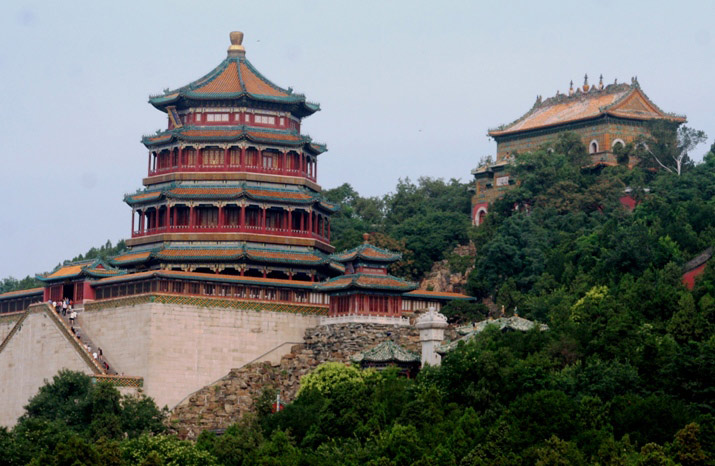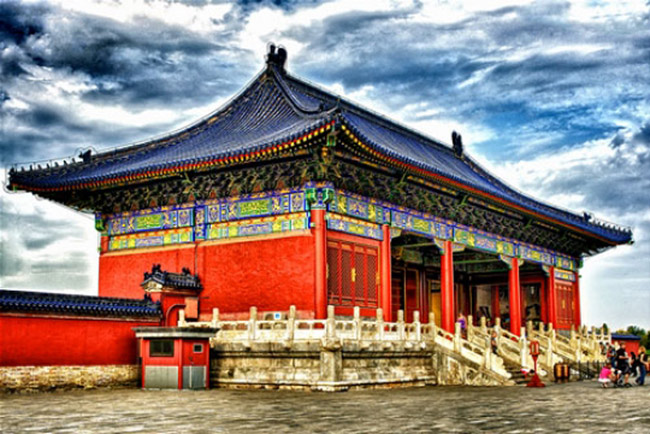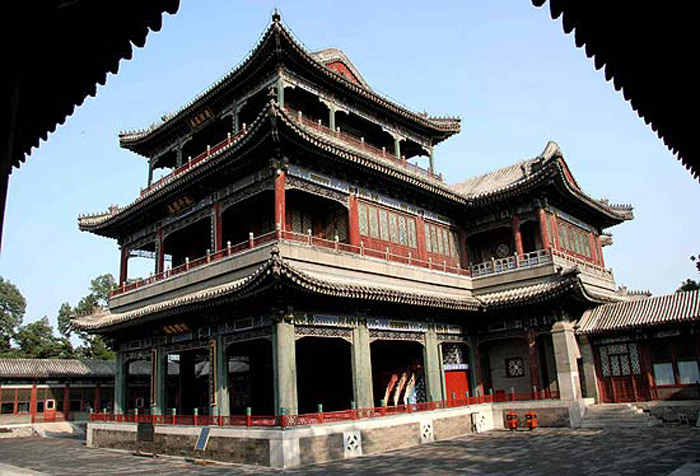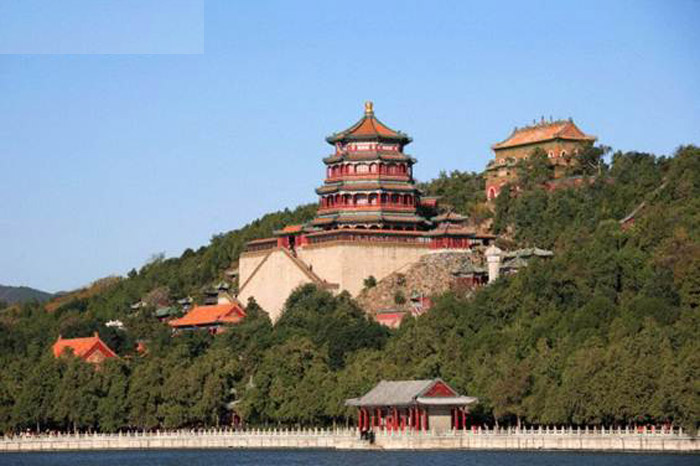Di Hoa Vien - World Cultural Heritage in China
The United Nations Science, Education and Culture Organization has recognized China's Di Yu Yuan as a World Cultural Heritage in 1998.

Di Hoa Vien is a Qing Dynasty built palace, located 15 km northwest of Beijing. Di Hoa Vien in Chinese language means the garden nurtures peace . So far Di Hoa Vien has been well preserved. It is famous for traditional Chinese flower and ornamental art.

Di Hoa Vien is also known as the Summer Palace , which has a history of over 800 years with many different names. At the beginning of the Qin Dynasty, the palace named Kim Son Cung was built at what is today Di Hoa Vien. In 1750, King Qianlong built Thanh Y Vien in this area to celebrate his mother's birthday. In 1860, during the British-French coalition war, bombarded Thanh Y Vien with severe damage, 28 years later, Cui Thai Hau took the capital to use to modernize the navy to restore the garden within. 10 years and named Di Hoa Vien. In 1990, during the Conflict War, the 8 allied forces once again broke Di Hoa Vien. In 1903, Cixi Tai Hau once again for the restoration of Di Hoa Vien.

The campus of Di Hoa Vien covers 294 acres, of which the lake area occupies 220 acres. The most prominent scene here is Wan Tho Son and Kunming Lake . The garden in Di Hoa Vien is divided into three areas: the administrative area consists of the Nhan Tho palace in Tu Hi, which receives the mandarins and resolves the national affairs and the resting area consists of large offices, ornamental flower gardens .

Located in Van Tho Son area is the most prominent Buddha Huong , this is a magnificent pagoda with many splendid levels, this is the place for the Buddha's everyday wisdom. Under Van Tho Son is the vast Kunming Lake . A marina shaped like a boat made of stone protruding on the lake surface, just below the Buddha's Perfume, this is also a place to welcome tourists to the boat to enjoy the scenery around the lake. Along the lake is a series of 728m long corridors, a series of corridors with many small spaces, each one is decorated according to different architecture with extremely sophisticated drawings with bold artistic features of China. In the middle of Con Minh Lake is a small island connected to the shore by a rainbow made of stone with 77 beats called the Big Cross. To this day, Di Hoa Vien is still considered one of the most beautiful parks in the world.

Di Hoa Vien is not only a beautiful park but a masterpiece of architecture . There are many rumors that the entire campus of Di Hoa Vien has been built in a very tight layout in terms of feng shui expressing the idea of Phuc Loc Tho , according to the secret of Tu Hy Thai Hau. There have been many secret studies hidden in Di Hoa Vien, especially to find out whether Di Hoa Vien was built according to Phuc Loc Tho's idea? If yes, how is it done?

The decisive breakthrough for answering this question has been since the researchers had pictures of Di Hoa Vien panorama from satellites using technology with super high resolution and shooting techniques. infrared. When these photos were published, the scientists were amazed at the strange composition of Di Hoa Vien. In the photo, Kunming Lake is shaped like a big peach whose book is a river that leads water into the lake through the West Gate of the Guanzhong located in the northern corner of Di Hoa Vien. The long, narrow dike on the lake surface creates a natural groove on the peach. The range of corridors used to make the way to go along Con Minh Lake right at the foot of Van Tho painting is like the wings of an outstretched bat . The corridor road on the north bank of Con Minh Lake is clearly a bow that penetrates into the lake bed forming the first part of the bat, the protruding part is used as a wharf for visitors to Lake Con. Minh is the muzzle of that bat. The hallway that stretches to the left and right sides is the outstretched bat wings. The passage in the east and the roof of Ngu Tao penetrated into the water and by the western corridor, it formed a pair of front paws of the bat, while Van Tho mountain and the lake behind the mountain formed the body of bat. The Confucius Cross on the opposite side of Van Tho is exactly the neck of a stretching turtle, whose head is the small island between Kunming Lake.

Because before there was no picture of the panorama of the park, its unique architecture was less recognizable. Even Tu Hy Hau, even though she has reached the highest floor of Buddha Huong and Van Tho peaks, she can only see roughly the shape of the peach, the head and the neck of the turtle as well as the head and the pair of nails. bat. The rest are not visible, especially the bat's body, which is obscured by other structures.

According to traditional Chinese feng shui, peaches represent Loc, the bat symbolizes Phuc, and turtles symbolize Tho. Thus, the overall structure of Di Hoa vien hidden in it all 3 things that Tu Hy wanted is Phuc Loc Tho which was shown by the great images. Is this structure the very special difference that is not available in any other park in China or in the world?



- Secrets - World Cultural Heritage in China
- Thien Dan - World Cultural Heritage in China
- Van Cuong stone cave
- Citadel and tomb Cao Cu Ly - Cultural heritage of China
- Cultural landscape of Bam - World Cultural Heritage in Iran
- Longmen Stone Cave - World Cultural Heritage in China
- The territory of Roy Mata - World Cultural Heritage at Vanuat
- Tomb of Qin Shihuang - China
- Zvartnots site - World cultural heritage in Armenia
- Potola Palace of China
- Lijiang town
- Hoang De and Hoanh Thon villages in Anhui
 Suzhou classic bonsai garden - China
Suzhou classic bonsai garden - China Chau Nguyen Dynasty
Chau Nguyen Dynasty Thai Son Mountain - World Wonder
Thai Son Mountain - World Wonder Ancient villages of Shirakawa-go and Gokayama
Ancient villages of Shirakawa-go and Gokayama Lotus sleeps for hundreds of years in the Qing king garden suddenly blooms
Lotus sleeps for hundreds of years in the Qing king garden suddenly blooms  The 100-year-old ill-fatedness of General Vien Sung Ho
The 100-year-old ill-fatedness of General Vien Sung Ho  The 84-year-old agro and the
The 84-year-old agro and the  The old man wrinkled like an old man because of strange disease
The old man wrinkled like an old man because of strange disease 